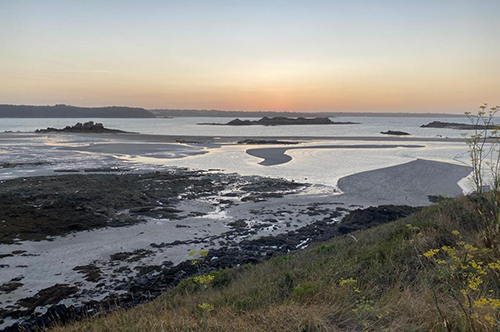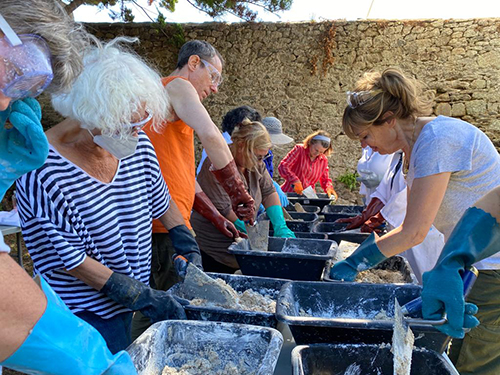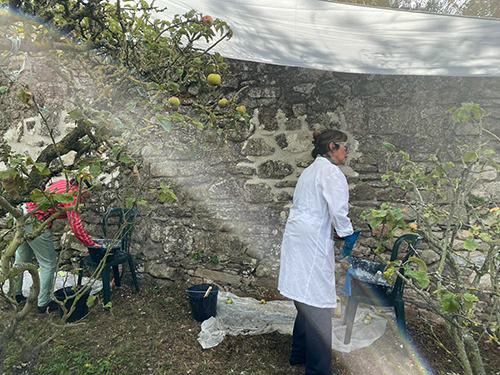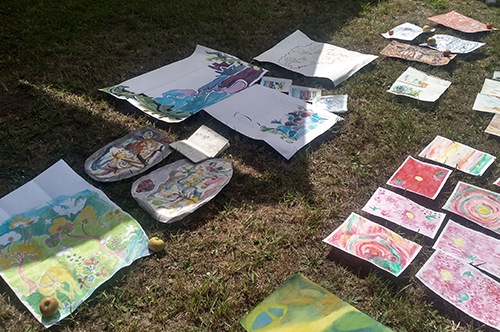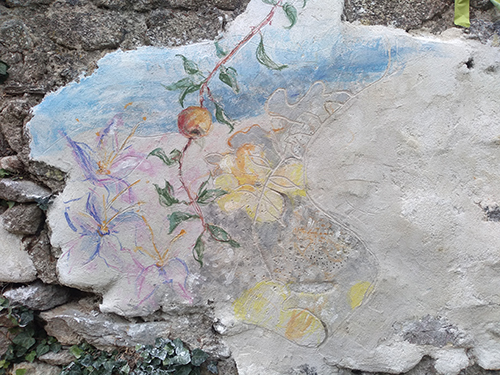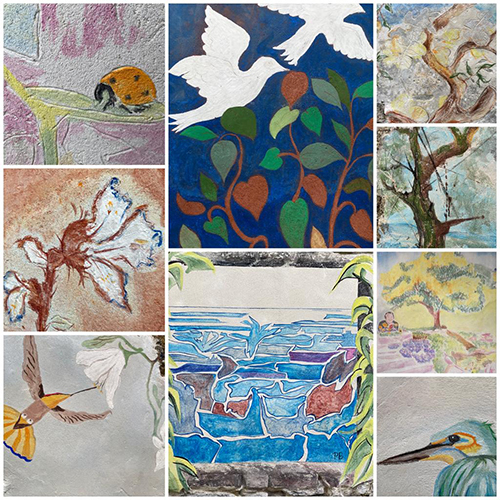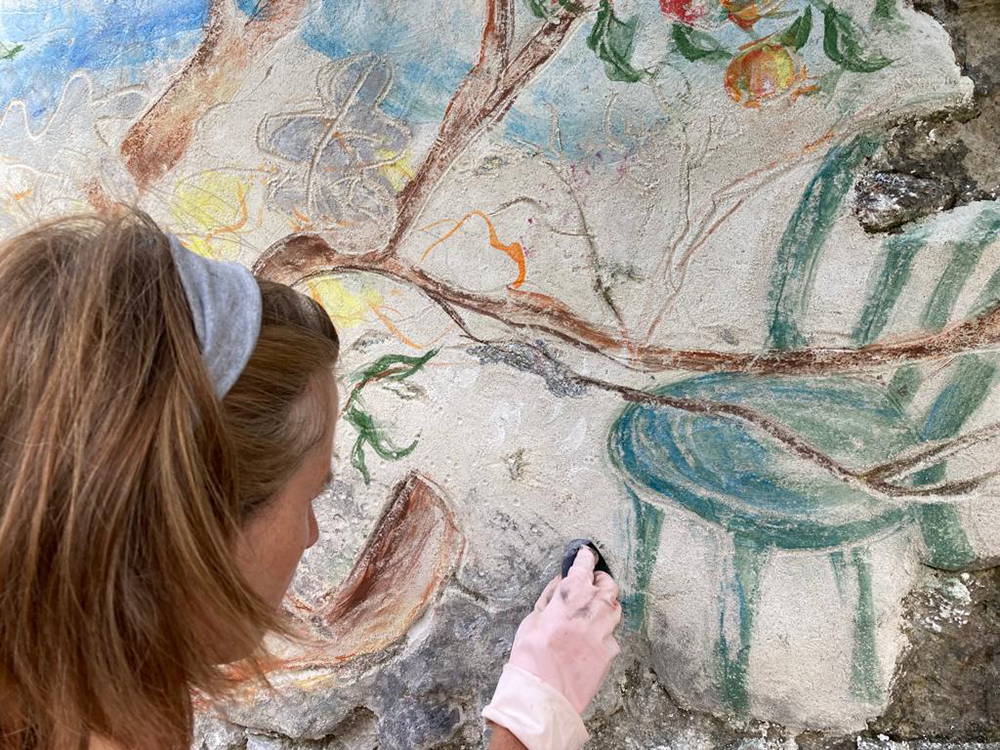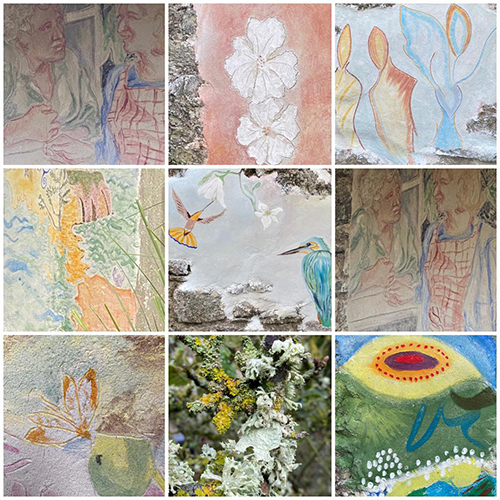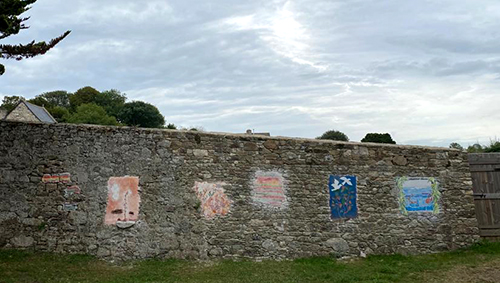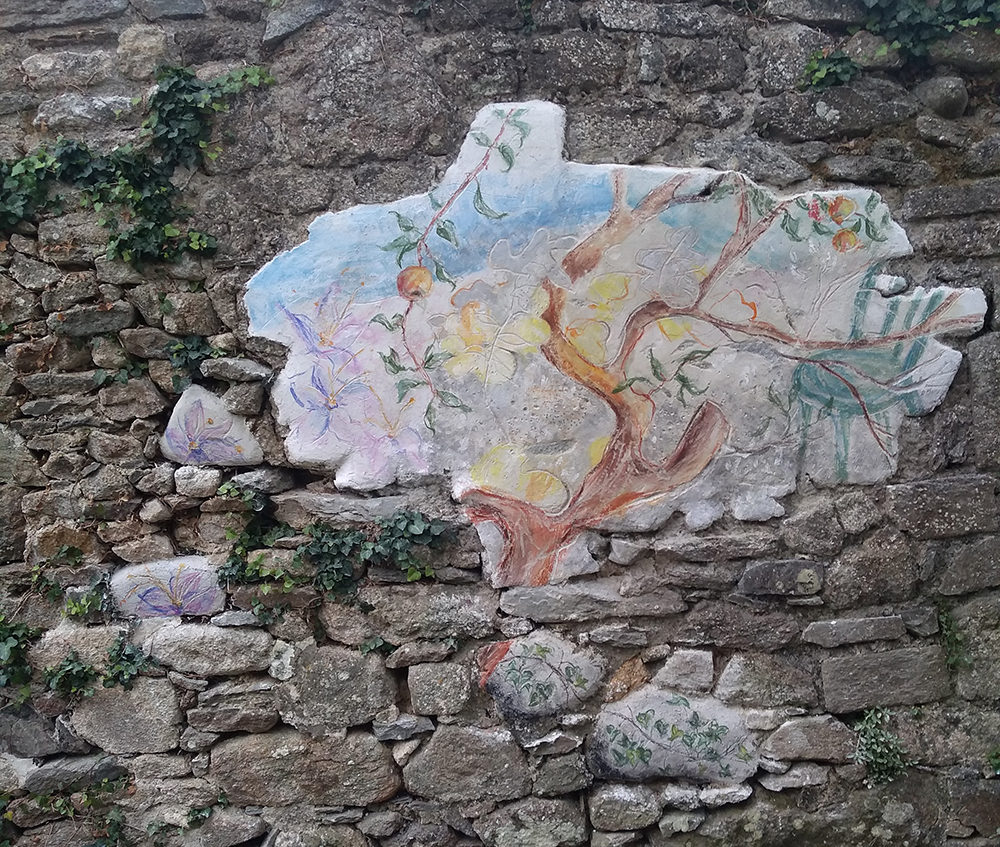
Continuing with my QEST Scholarship, I attended a week long fresco course, l’Art de la Fresque, at the beautiful Abbaye Saint Jacut de la Mer in Brittany, France. This was run by Isabelle Bonzom and Valerie Letombe and hosted by VMSF. There were thirteen participants – I was the only foreigner. The journey from Saint Malo was exciting ; squashed into a taxi with five others, we swept past inlets full of fishing boats and small towns decked out for summer, me brushing up my French and getting to know some of the people I would be spending a week with.
After introducing ourselves, I learned that we were quite a diverse bunch; all creative in our own ways, but most had not done fresco before and some specialised in disciplines other than painting. I was impressed by the courage and curiosity of the group. This ‘go for it’ attitude was exemplified later that evening when some of us took a quick dip into the sea. Saint Jacut de la Mer is extremely tidal, meaning that sometimes the sea was deep and right up to the walls of the abbey and several hours later you could walk across stretches of wet sand to what had been islands earlier in the day.
It was the perfect setting for a week of fresco painting and I am thankful to the Queen Elizabeth scholarship for this opportunity. We all chose our section of granite wall in the orchard close to the main building. I was very pleased with mine as it was partly hidden by trees and had ivy growing among the stones. Isabelle gave a fascinating and informative talk on the history and technique of fresco painting. and we started preparing our walls. This meant scraping off any unwanted plant matter and checking for loose stones and mud. The wall needed to be as stable as possible for applying the roughcast (sand, lime powder and water), which was made communally in small troughs and then emptied into large bins. We started off by filling in any large gaps, of which there were plenty, between stones.
The work was physical, but there were breaks for communal meals taken at a large table. Lunch was generally one and a half hours long and consisted of many French dishes, all beautifully cooked. It was quite a change to a cheese sandwich taken on the hoof. We were accommodated in comfortable single rooms in the abbey.
Isabelle and Valerie encouraged us to work on our maquettes on a one to one scale using egg yolk and pigment or watercolour on paper. This was to help us firm up our ideas and practise the sweeping gestures that would be needed once painting on the wall. I wanted to work with the notion of fragments and respond to the place. I spent a few hours drawing plant life and was particularly drawn to the gnarled apple trees in the orchard. My fellow participants worked on ideas based on nature, too.
Further work was needed filling in the irregularities of the wall before we could put on the final coat of lime and sand for painting. I decided to allow some undulation in my wall or else I would never have time to paint my three giornati (daily sections). Having done the large fresco in Merz under Isabelle’s guidance, I felt fairly confident, I wanted to treat it slightly differently, concentrating more on coloured washes than on sgraffito, but I did allow myself a certain amount of scratching through to the stone below. It was enjoyable going with the shapes of the stones and creating an irregular image with several satellites.
I was impressed with how Isabelle encouraged everyone to create a fresco that expressed their concerns and played to their strengths. There were some fantastic frescoes of birds, trees, flowers, people, rocks and a few more abstract ones as well. It was good to be able to learn from one another. Everyone was so friendly and my French certainly improved as the week went by.
